This week we’ve had posts about spring dresses, spring fashion for kids, outdoor furniture, and today I’m talking lawns. Can you tell we are desperate for some sun here at Rock My Towers?
I feel like a bit of a sham referring to the grass in our garden as a ‘lawn’. ‘Lawn’ conjures an image of a huge, velvety and immaculate stretch of green, perhaps with stripes. When in fact our garden is modest in size and muddy. And has most certainly never had stripes. It is so muddy that it’s a no-go zone unless wearing wellies. I blame the fact that it’s a new build: I’ve heard all sorts of horror stories about builders chucking bricks, rubble and other debris under the turf in new build gardens, and I’m certain this was the case with ours.
There’s one section of the garden which gets virtually no sunlight and seems to be constantly waterlogged. The grass in that area has turned into a squelchy, soggy and unsightly patch of mud. Every year I spend ages (ok so I spend one afternoon maybe) piercing the lawn surface with a garden fork, trying to drain some of the water away, to no avail. So we are weighing up the possibility of installing artificial grass.
Artificial Grass: The Pros
1. Artificial grass would be much easier to maintain than real grass, because, NO MOWING. (I’m now a champion mower – gone are the days when I forget to attach the grass catcher bag, leaving clumps of freshly cut grass behind me. True story. However it’s one of those jobs that is never as important as the others and inevitably gets overlooked).
2. Even better, artificial grass would mean NO STRIMMING. Last year we had raised railway sleeper beds installed around the edge of the garden, and the trees and shrubs in the sleepers have brought a bit of character and texture and colour to the space. However, the edge of the lawn needs to be regularly strimmed to keep that edge between the grass and the sleepers looking smart. And I’m no champion strimmer. The plastic wire bit always breaks on me.
3. I like the crisp and clean aesthetic of artificial grass – those neat edges! The ‘look’ also fits nicely with the era of a modern house.
4. I think it works well in small gardens, and apparently it is also ideal if you have a sloping garden which can be tricky to mow.
5. It’s soft and safe underfoot for the kiddos. Goodbye, awful prickly weeds that I can never get under the root of!
6. No muddy lawn means no muddy house.
Artificial Grass: The Cons
1. My friend Perfect Nat has recently had artificial grass installed in her garden and she raves about it, but says its one downfall is that it can get really hot in the summer. So keeping a section of patio or real grass would be a must.
2. There is a whole range of shades, lengths and densities of artificial grass, which sounds like it should be a ‘pro’, but not when you’re as indecisive as I am. There are 22 choices on the B&Q website alone, and they all look preeeeetty similar if you ask me.
3. I’ve costed it up and to astro-turf our garden we are looking at a price of £2,750, if we were to go with the B&Q options. Which is a hefty initial outlay.
4. It’s never going to look (or feel) as lush, luscious and natural as real grass. But anything’s a damn sight better than the mud bath we’ve got going on at the moment.
{Edit} Given the feedback below I also want to highlight the environmental impact. In my research (and perhaps it’s clever marketing by the companies making these products) it was suggested there was a positive impact to the environment considering these products are often made of recyclable materials. I (perhaps naively) didn’t think about the fact that it doesn’t biodegrade. Thank you for highlighting the other factors that should be carefully considered.
Do you have artificial grass, or would you ever consider it? If you do have it, would you recommend?


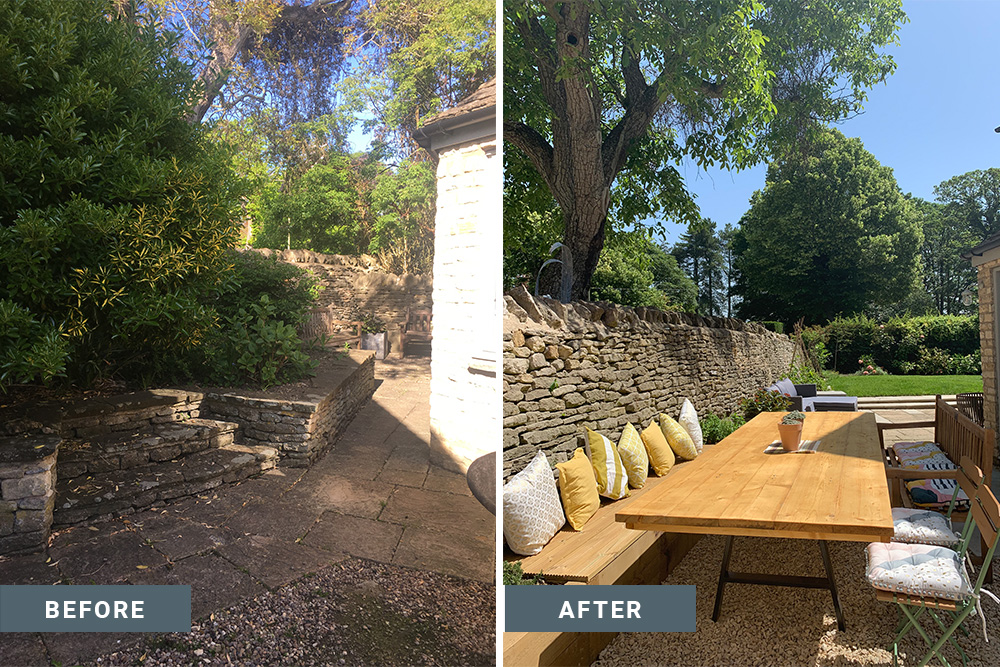
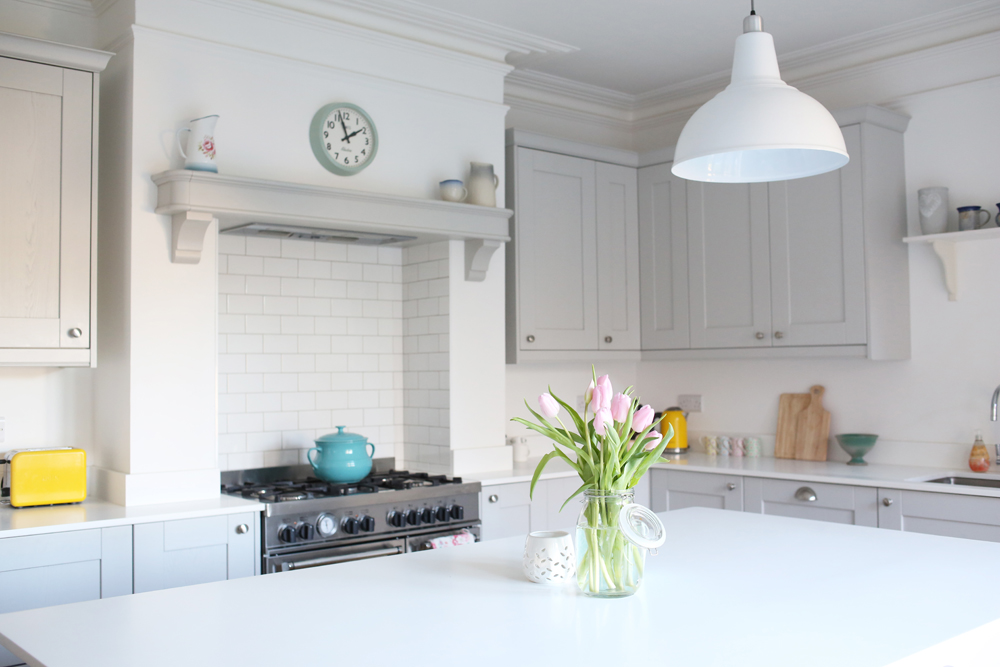
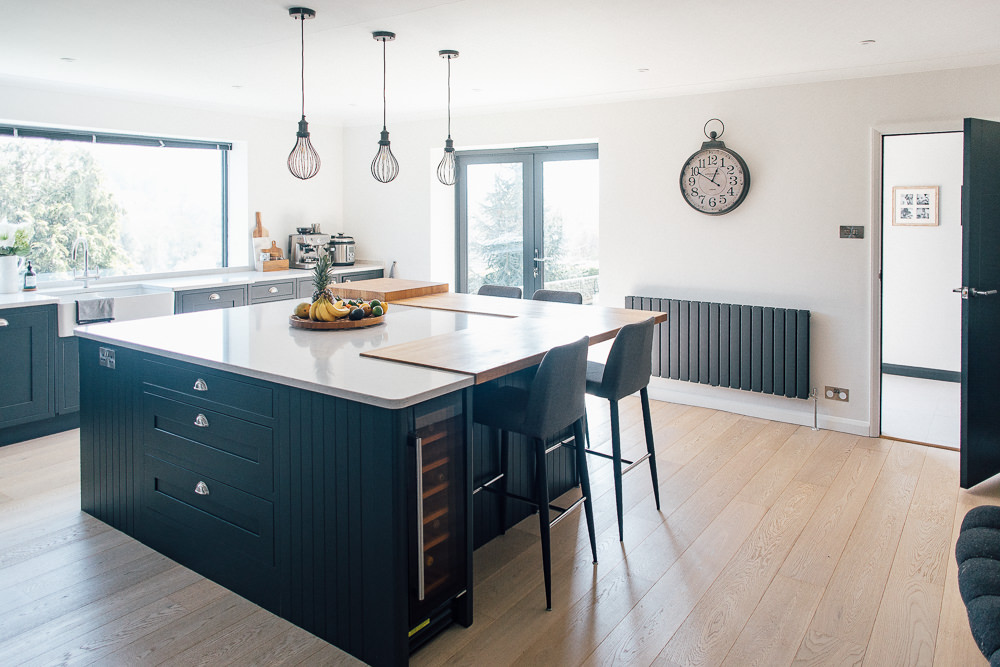
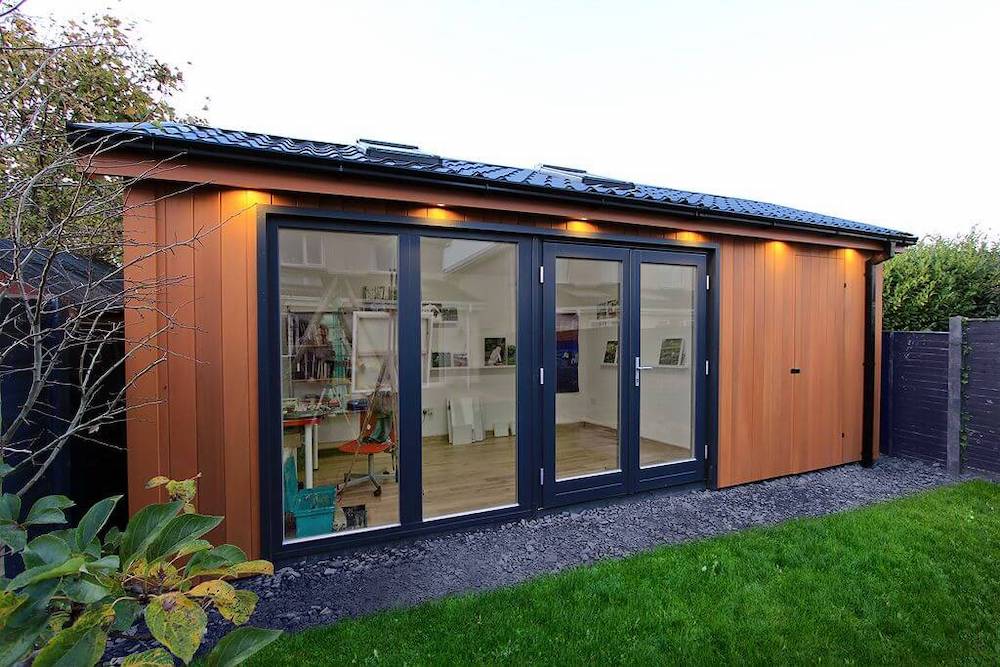
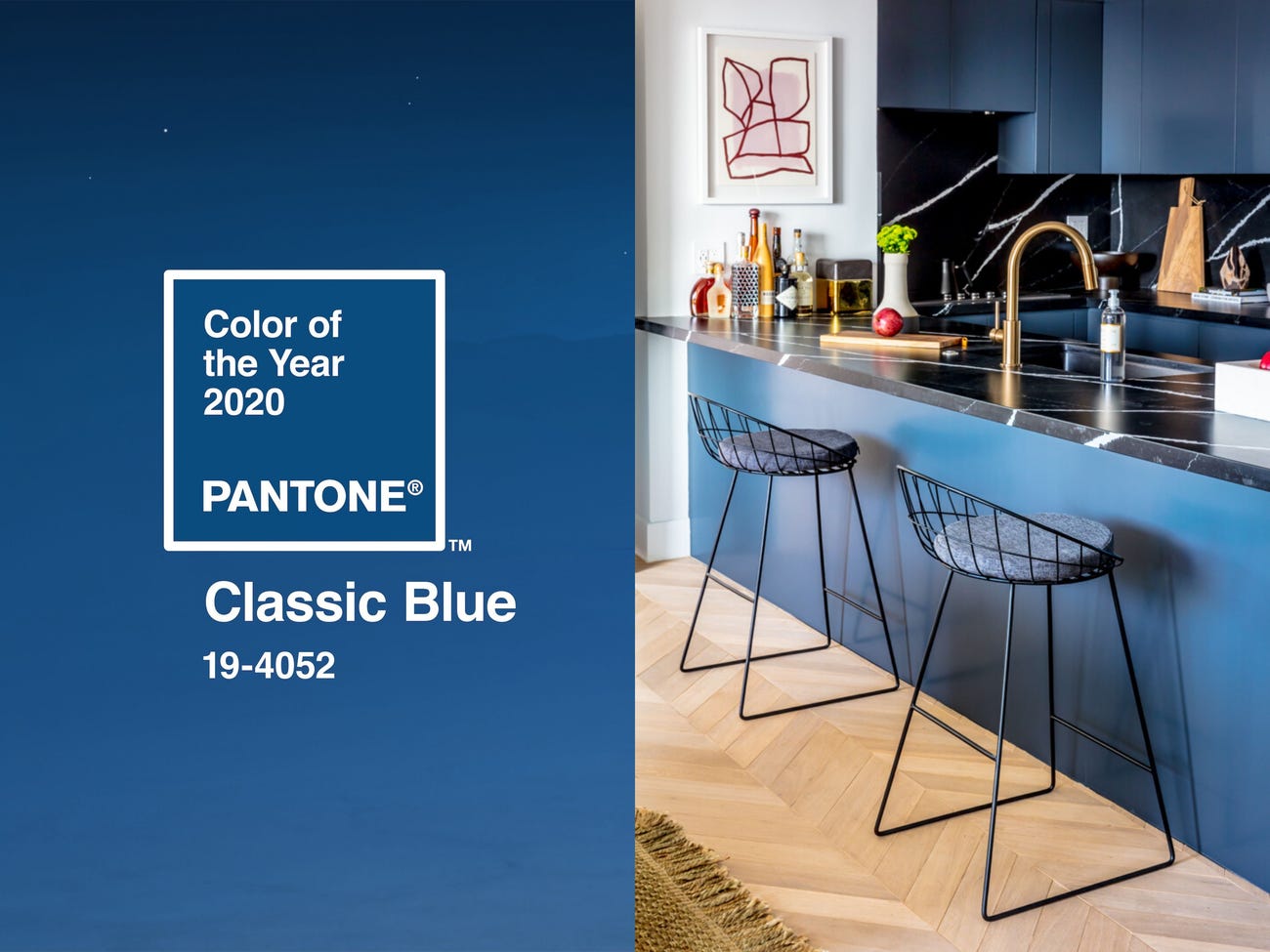
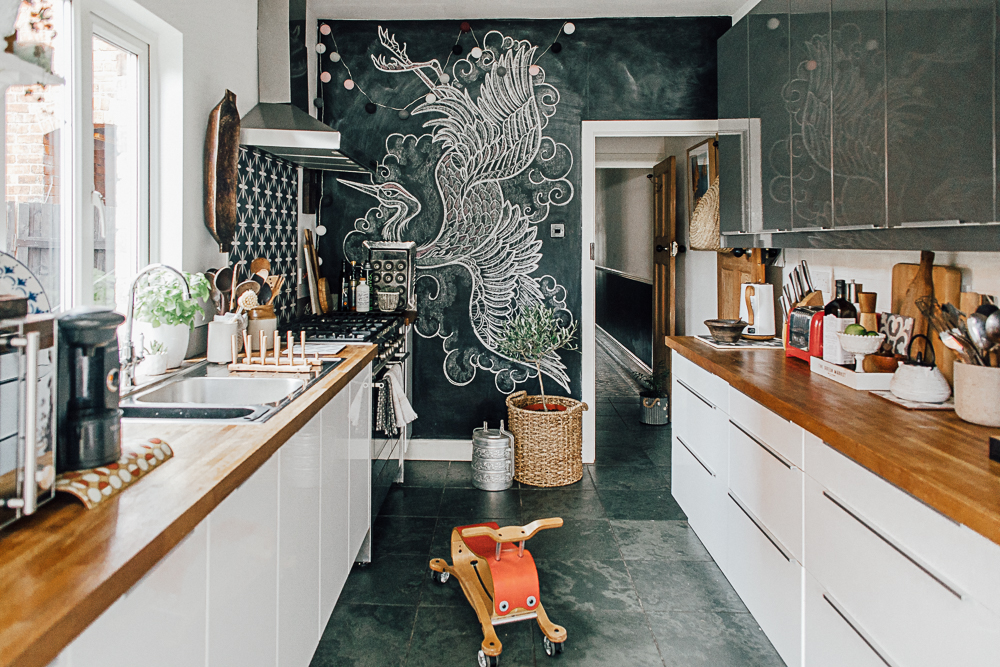
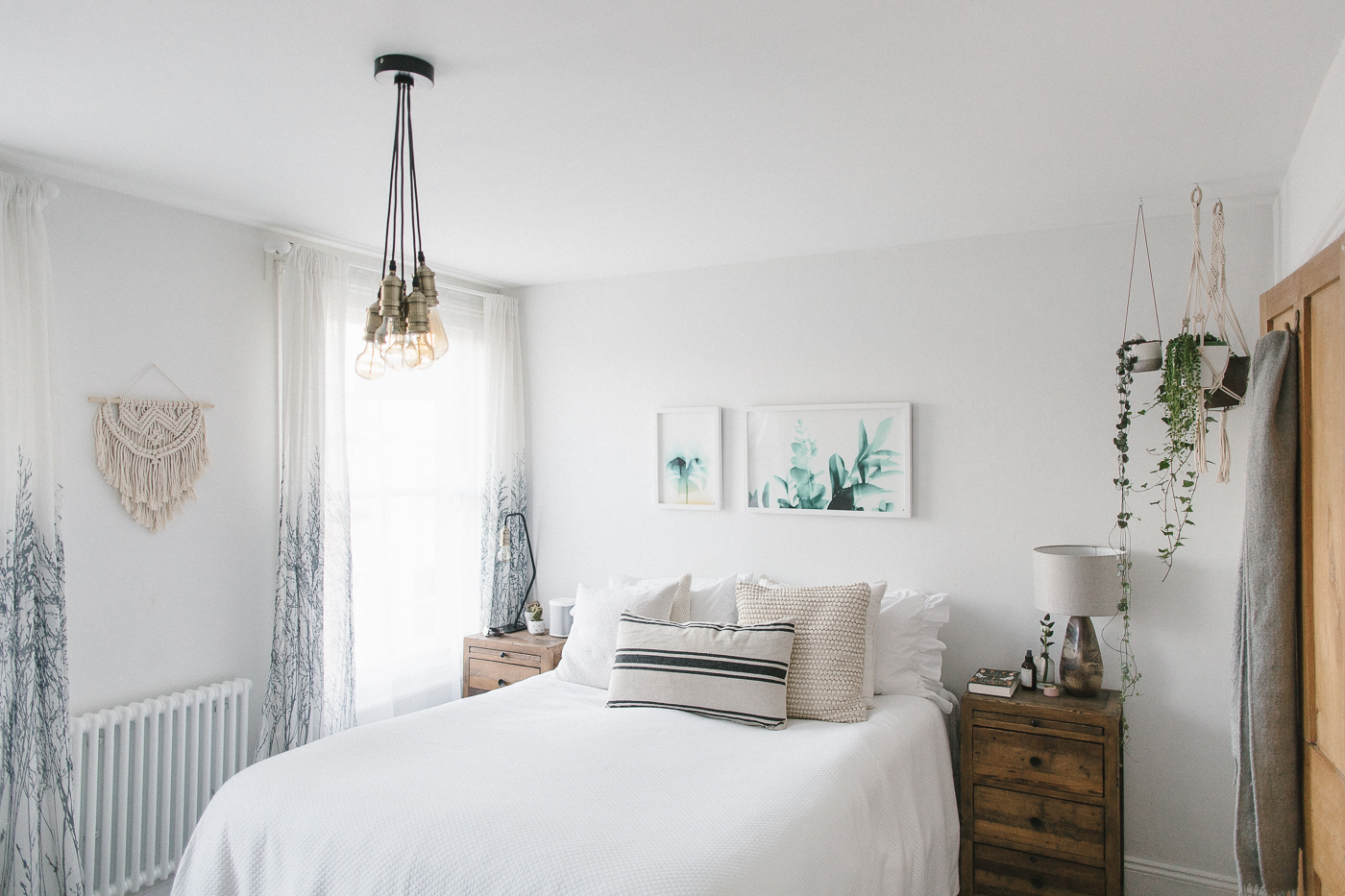
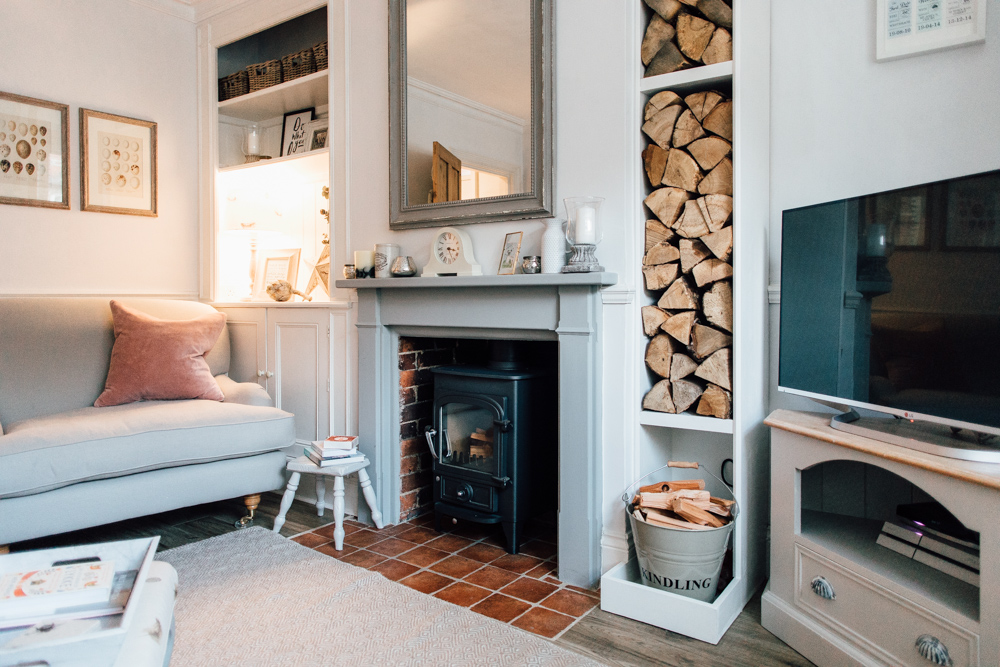
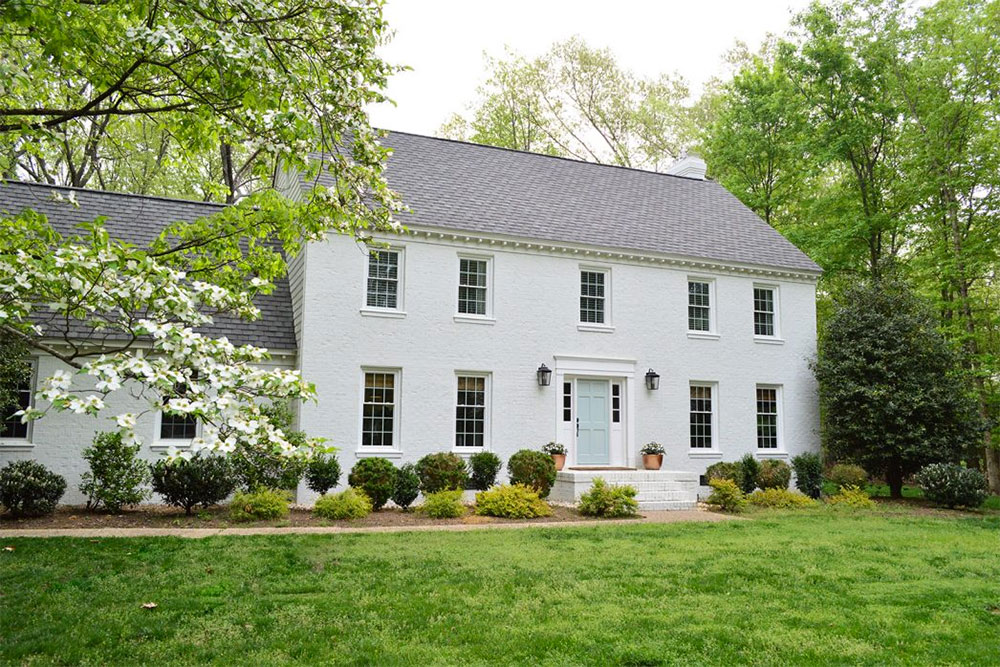
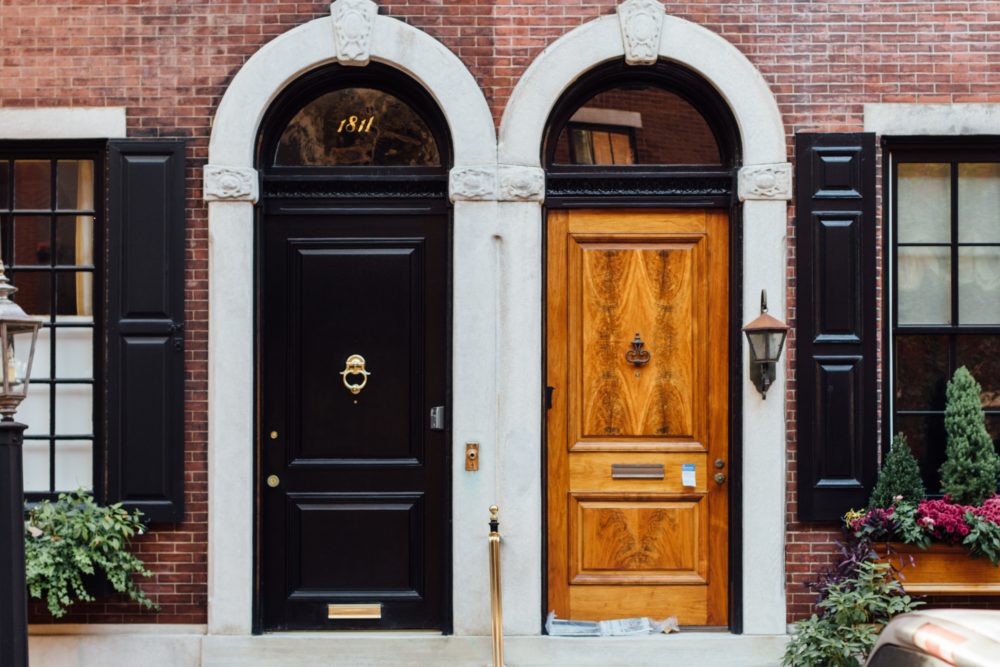
I think a con has to be the environmental impact. No grass (or whatever natural feature you could put in place of grass) means no birds bobbing along looking for worms or material to take back to their nests. I feel the same when people totally pave over their front gardens with massive drives – like they’re obliterating all nature. For these reasons I would never do it.
This is a really interesting point Laura. My friends in London have artificial grass and I can definitely vouch that it hasn’t impacted the amount of wildlife however they’ve kept some pretty large beds too with lots of shrubs.
Expanding on Laura’s environmental con, I think it’s a bit sad you move not mentioned the environmental impact at all with this. I think That artificial grass could be a good thing in play areas (although I didn’t know it gets so hot in summer) and maybe hospitals and similar public spaces where it is done for looks and to keep maintenance down and especially where people don’t actually use it, thus saving money, but I don’t think it should be available for home use at all. No doubt most artificial lawns are a form of plastic, so during their production they will have had massive environmental impact with chemicals and greenhouse gases being released into our atmosphere, and physical plastic waste being released into our water and ecosystems. Grass provides us with oxygen to breathe and acts as a carbon dioxide fixer, which again is hugely beneficial to the environment.
Depriving animals and insects of their habitats is a known issue globally and extends way beyond cutting down the trees that orangutans live in, and this is another way of destroying their ways of life. As an example, we had our fence replaced and have put a couple of small holes at each end to encourage hedgehogs to move between us and our neighbours so they can breed outside of their family groups and have better access to food. If we got rid of our lawn, hedgehogs wouldn’t have nearly so many snails to feast on and perhaps we’d end up with more of our plants being eaten.
If the artificial grass is pulled up because it’s no longer wanted, does it end up in land fill or can it be recycled or reused? And aside from the fact that the soil underneath it would be damaged and stripped of its nutrients, where does rain water go if you have a fake lawn? Does it sit on the top so you end up with big wet patches or is it installed so that water can drain away to underneath? In times of prolonged precipitation, surely the soil underneath could still be waterlogged and not be able to evaporate away, causing more issues that you might not have considered with the installation.
Given the current plastic crisis, and the fact that we are being advised to stop wearing plastic clothing, stop using disposable bottles/cups etc, I fail to see why anyone would think that artificial grass is really worth it, just so it can be green all year long and not have to be mown. I love reading your articles and find them to be well written, informative and interesting but think you have missed a huge point by not tackling environmental issues in this article.
You are so bothered about the environment. Can I ask are you vegan to ???? X
Likewise my friend has artificial grass and they have beds and borders. Plus lots of lots.
The downside is that if you are picnicking or whatever then crumbs just sit on it and you almost need to hoover the grass which is a bit bizzare.
Ditto. The steep increase in artificial lawns and tarmac front gardens is leading to a massive reduction in urban habitat, there’s no denying that. Also let children get muddy!
Agreed! Mud never killed anyone. And most kids love it. Set up a mid kitchen and away you go
We are in the process of sorting some artificial grass in our yard, it will only be a small patch but enough for the little one to play on in the summer. We live round the corner from a park so no need for a big garden. We plan to put a raised bed to one side to hopefully give it a more realistic look. We have ordered some free samples from grass-direct and they are surprisingly soft. Has anyone got any recommendations of where else do high quality/real looking grass? Our neighbours patch of grass is constantly waterlogged so hoping to avoid this.
Soggy waterlogged grass plus Labrador and toddler = mud fest in garden, kitchen and living room too if I’ve not been quick enough to close the doors. I think the garden drainage is the main issue but does that go away with fake grass or does something else have to be done to prepare the ground?
Hadn’t considered the environmental aspect of fake grass before – nature and the impact of making the product. Every day is a day at school.
Very timely!! We’re getting our artificial grass fitted today by EasiGrass. I was so apprehensive at first but despite our best efforts our grass is a state and doesn’t grow in two corners. It is muddy and we have two little ones who cannot use it for most the year. Despite the huge cost (we have quite a small garden in London) I am now super excited and it’s spurred us on to crack on with the rest of the garden!!
Definitely agree on the environmental impact. Artificial grass is energy and resource intensive to produce and it will NEVER biodegrade. I’m pretty sure that you wouldn’t write an entire article promoting single-use coffee cups; microbeads or other disposable plastic products so I am shocked that you would consider promoting this given it’s terrible environmental impact. Also Laura’s point above is valid and is a real problem that we should all be considering.
Poor show RMS.
*(waits for all the comments telling me to wind my neck in)*
I agree Sophie. I’m also a bit disappointed that this wasn’t considered in the cons list in the article.
I’m guessing you’ve never lived in a house with a garden rendered unusable by the lack of ability to grow grass, Sophie?
We live in a relatively new build (10 years old) and have large protected oak trees just outside the perimeter fence. The shade, falling leaves and poor soil mean after 4 years of doing everything I can to grow a lawn I finally caved and had artificial grass installed. I never liked the look or idea of fake grass. However, I can safely say that seeing my son able to use the garden for the first time since we moved in, worth every penny. For us, it’s not about the maintenance (there is still maintenance – I sweep (leaves) and clean the grass regularly), or the look, or even getting rid of the lawnmower – we have real grass at the front of the house. It’s about my son being able to use the space. Our other option would have been to pave the entire garden, which would not be practical until our son was much older.
Artificial grass cannot be put into the same bracket as disposable coffee cups and micro beads. They are single use items which can easily be avoided. If we care for our lawn properly, we can get upwards of 15-20 years use out of it.
With regards to wildlife, we’re lucky that the oak trees do attract a wide variety of wild birds to the vicinity, and I put our nuts and suet balls. We regularly see robins, nuthatches, blue and great tits visiting the garden. They also hop about in the wide beds looking for worms.
I have no regrets and laying artificial grass has opened up the garden for our use for the first time since we moved in.
Yes, it can be put in the same bracket. We can’t pick & choose what plastic is bad for the environment & what isn’t. Artificial grass can also easily be avoided! People lived without it for years! As another poster mentions, with some hard work & research, boggy grass can be overcome.
And you guessed wrong because I have lived in a house which had areas of grass that wouldn’t grow due to lack of light/poor drainage – we dealt with it with aforementioned hard work and alternative solutions (which didn’t involve paving), not by covering it with plastic.
It’s fantastic that you can now use your garden but I really don’t see the need to be so aggressive in your response to my original post.
Appreciate your response, Sophie, and I am sorry you found my response aggressive, that was not at all how I had intended it to come across. I felt from your original wording that you were expecting some readers to disagree with you.
Boggy grass is not our issue. We are battling extreme shade, continual falling leaf coverage and lack of nutrients due to both poor soil and the aforementioned oak trees. As I mentioned, I’ve tried many, many things and worked very hard over 4 years to get grass to grow, but was unsuccessful. I’d love to know what alternative solutions worked for you.
I live in London and had artifical grass in our last house. The garden was very small, so we had a small patch plus decking, with a raised sleeper bed and built in bench. We loved it, it meant we could lose our old shed as no need to store a mower, which freed up valuable space. We had big patio doors at the back of the house and the grass made a real impact as all year round it was lush and green so lovely to look out on. We’ve since moved to a bigger property and are about to re-do the garden, including a big section of artificial grass. I didn’t hesitate in choosing it again, not least as I now have two young boys who won’t be running mud in and out of the house! I didn’t find any issues with it getting too hot, and also liked that it dried out quite quickly so was less soggy than grass would be if the sun came out after a shower. I don’t think you would regret it at all, and plant life can still be added in flowerbeds or planters/pots to soften the look and give the insects a home 🙂
Thanks Laura!! Your first garden sounds much like mine so am pleased you had a good experience with it!
We have exactly the same problem. New build now 9 years old. Garden done twice. Second time had additional drainage added. Still boggy by house but not as bad as it was. I wouldn’t have thought astro turf would change this although I suppose it would stop the mud. Hubby wants it but I too worry about the environmental impact.
We have some and love it. I call it ‘faux lawn’ -sounds much posher then x
We lived in a flat for 9 years with no garden so when we moved into a house with a small garden 2 years ago, it felt amazing! However I never realised how much maintenance a lawn needs! Lisa, we also live in a new build and had to have the lawn re-turfed due to all the things you mentioned above. It’s still not perfect and looks pretty awful at the moment with all the rain we’ve had and it’s really patchy. I thought grass sort of took care of itself! How wrong I was. We have also been tempted by artificial grass but will probably stick to the natural stuff and persevere.
I also immediately think about the environmental impact. I would never do it but can understand your reasons for considering it. Another option would be to remove the turf, work on the soil and lay new turf. I removed rubble from approximately a third of my garden last year and it took ages, not helped by the fact that we have clay soil, though you could pay for this. Once I’d removed rubble I added lots of compost to improve and open up the soil and am about to add top soil before laying turf. I expect I will now have one good bit of lawn and the rest will still be squelchy and waterlogged. You could also buy seed or turf for shady areas in the parts that don’t grow. I knew nothing about gardening when I moved in here and have spent a fair bit of time on the gardeners world forum posting photos and asking for help. Some very knowledgeable people offered advice.
Completely appreciate the comments about the environment, but we have just booked to have artificial lawn laid in our small ish garden. This was never about it being low maintenance, like Lisa we live in a new build where the drainage for our garden was never considered! Our garden is a constant muddy puddle and the mess gets brought into the house by the cats. My two year old loves to be outside and it is such a waste to not be able to use it. I cannot wait to be able to use the garden all year around – whilst the artificial lawn won’t solve the drainage issue, the fitters will dig far enough down and then lay aggregate on top 🙂
I bought my first house last summer and had fake grass installed as soon as possible. I have a tiny postage stamp of a garden and had to get a shed large enough to hold 3-4 bikes so by the time I got that, there just wasn’t really enough room to get another shed to store a lawnmower for a patch of grass about 4x3m. It cost £860 from memory and I’ve been really pleased with it. It looks neat all the time, it feels nice, and I have never had any water pooling on it despite torrential rain and loads of snow here in Somerset! I did have it professionally installed and I guess they did some ground work but I went to work and it was done in half a day!
I didn’t think of the environmental impact I’m afraid. I’m trying to do my bit – in fact I recently organised an order of 267 ecofffee cups for my office – but I didn’t think about the plastic. I agree with the other posters above that it’s long lasting, it’s not single use. I’d love to have proper grass but it just wasn’t practical.
We are having artificial grass in our garden. We have quite a small patch of grass in a tiered garden. It’s been impossible to keep looking well since we’ve been in this house as it’s got lots of weed patches, doesn’t dry out very well so mowing is difficult, it slopes and access is via a few stairs.
I want my son to be able to play out.
Whilst I agree with environmental issues – I also agree with another poster – this is meant to be something that will last for many many years. It’s not a single serving coffee cup or plastic wrapping from food produce etc.
There have now been machines developed to enable artificial grass components to be separated (i.e plastic grass from rubber backing) which mean it can be recycled and you can buy artificial grass made from recycled material to start with.
There is prep work involved, usually a layer of stone topped with sand need to be put down and this will allow for drainage.
As with everything it isn’t for every one. We have trees and large planting areas in other levels of our garden for wildlife and I always have bird Feeders out. Id I had a flat 5 meters or more sized patch then I’d absolutely be going for real grass but I haven’t so that’s it.
Can I just say well done to RMS, I bet you never expected such heated debate over this topic?! Very interesting and informative to read. I’m a bit of an eco warrior myself so pretty anti for all the aforementioned reasons, and when buying our house saw a couple of awful examples of old, poorly maintained Astro turf installed in waterlogged gardens that rendered them ugly and unusable. However I’m lucky that grass does grow in our garden, so I do take peoples’ point of view that a patch of mud is also unusable and unsightly when you have a young family and pets. Maybe the gardeners of the future need to start looking for more environmentally friendly alternatives for us…
I was reading the most amazing article this morning on replacing bitumen with landfill plastics for laying roads and fixing potholes.
Given the amount of choice out there, there is BOUND to be someone making artificial lawn with 100% recycled plastic.
Given that there’s enough plastic currently in landfill in the UK alone to lay and maintain roads for the rest of time, clearly we need to be thinking of appropriate ways of harvesting and actually using what’s already in landfill (as well as preventing more from entering the system). To me, an artificial lawn that helps a family enjoy and use their outdoor space more would be a fine use for that plastic that would otherwise just be left in landfill.
What if I have 2 dogs? Pops, wees etc. What is the upkeep with regard to this? Anyone got pets?
My mother-in-law has artificial grass for parts of the garden and dogs. It’s easy to clean but you do need to sanitise it occasionally. I also find that you can really smell it in the summer, especially the wee. We have dogs, too and whilst our garden resembles a mud pit more than an Instagram-worthy lawn, I would never go for it.
Overall I agree with all the comments about the environmental impact. It hasn’t been around for very long as a mass product so the longterm effects are not know at all. I really don’t understand what’s wrong with kids getting a bit (or in our case – a lot) muddy outside and I find that need for perfect grass a bit sad.
I’m afraid it’s up there with pleather shoes, acrylic jumpers and laminate flooring as a no go for me. But plenty of people have those things and love them. My preference is always for ‘real’ and if you don’t want lawn i’d consider stone patio or wood decking as an alternative. Also a muddy area of real grass will turn into a wet puddle of artificial grass unless the drainage under is sorted out. And if you are doing that then you may as well have turf put back in top
Wow, who knew Astroturf would be so divisive?! Thank you for all the comments. I’ve got to admit I hadn’t fully appreciated the environmental aspects. Lots for me to consider.
We have had our artificial grass for the last 6 years, i needed convincing at first but I’m now a total convert, my son and his friends can play football all year, I can lie on warm but never too hot grass in the summer! We have lots of birds that visit still because I feed them and there is a water bath for them to drink from. I would never go back!
I think there may be a time and a place for artificial grass but the film ‘The Lorax’ comes to mind whenever i hear the words!!
Im late to the comments but i find it very suprising the number of people saying they are shocked that anyone would consider artificial grass based on the environmental impact when there are countless fashion posts here which always feature mass produced high st fashion with commenters gushing over cheap prices from bargain stores with no comments on how bad fast fashion is for the environment-
Its been cited as the second dirtiest pollutant in the world.
I have been considering artificial grass for a north facing section of my garden which gets half sun/half shade- garden designers have warned us against lawn which i would prefer. Currently its gravel (and endless weeds) and i really want a space for my future child to play in. The rest of the garden is tiered and we have been filling it with lots of wildlife friendly plants and flowers.
To be clear, im not averse to buying fast fashion (though i prefer independant designers when funds allow and i only ever buy clothes i really love- not ones i would chuck out every year) and would never consider artificial lawn if my garden was suitable for real lawn but i find the comments on this post so suprising!